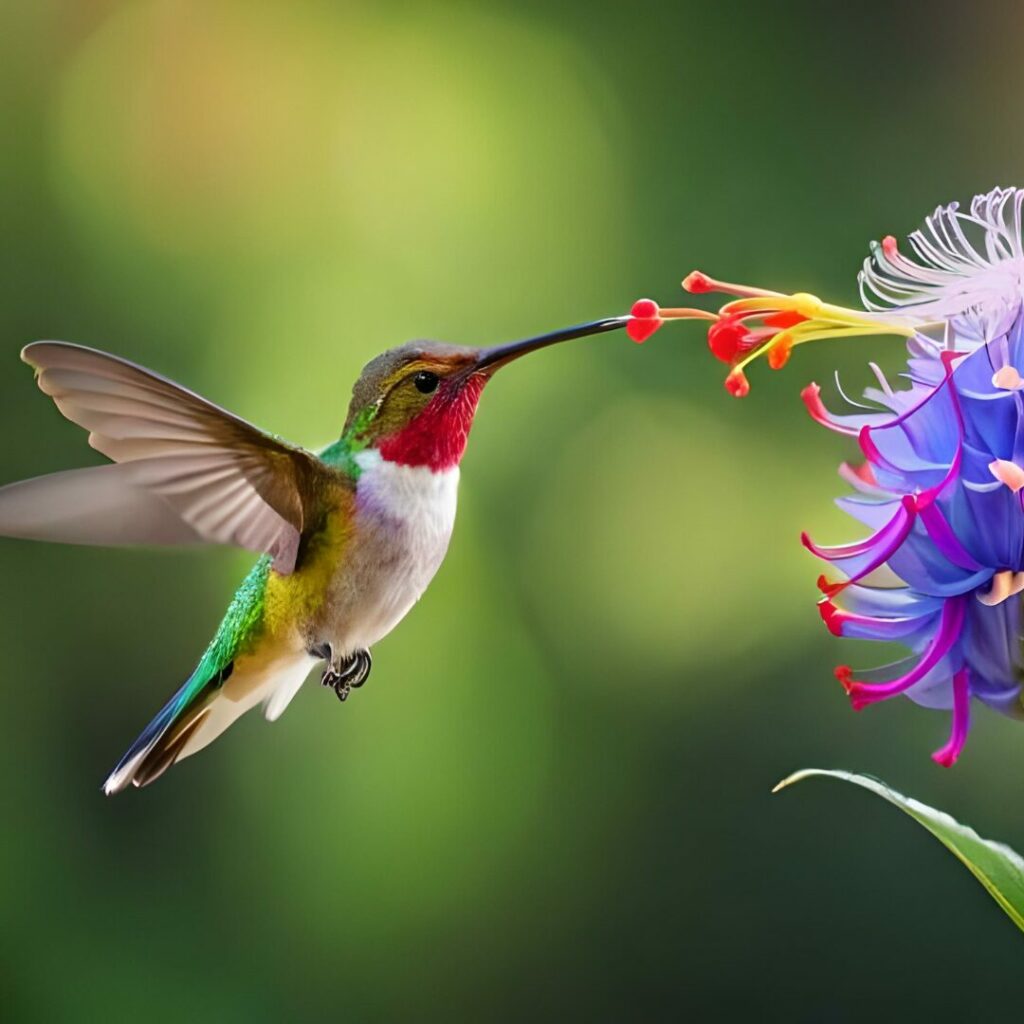Hummingbirds, those tiny avian marvels, captivate us with their aerial acrobatics and vibrant colors. These little wonders bring joy and intrigue to all who are lucky to see them.
Introduction to Tiny Flyers
These minuscule birds, often known as nectar sippers, are a sight to behold. They zip through gardens with incredible agility. Their ability to hover mid-air makes them unique among birds, providing endless fascination for bird lovers. Watching them is like witnessing nature’s magic, with their iridescent feathers shimmering in the sunlight.
Abundance of Hummingbird Species
There are over 360 species globally. In the U.S., we encounter 15 species regularly, with a few others appearing sporadically. From the common Ruby-throated Hummingbird in the East to Anna’s Hummingbird on the West Coast, each species adds unique splashes of color and charm. Some are vibrant and flashy, while others are subtle yet equally beautiful.
Special U.S. Hummingbird Visitors
According to CornellLab, a vividly purple-throated Lucifer Hummingbird primarily inhabits northern and central Mexico. In the U.S., it appears in extreme southern Arizona, New Mexico, and west Texas, making it a highly sought-after species among avid birders.

Facts About Hummingbirds:
- Energy and Diet:
- With high energy demands, hummers feed continuously.
- A Ruby-throated Hummingbird might visit over 1,000 flowers daily.
- They consume up to half their weight in nectar from sunrise to sunset.
- Pollinators and Protectors:
- These avian acrobats significantly contribute to pollination, aiding thousands of plant species.
- They help stabilize ecosystems, especially after natural disturbances like fires and landslides.
- Heartbeat and Flight:
- The smallest nectar sipper is lighter than a dime.
- Their heartbeats are extraordinarily fast, with some species beating over 1,200 times per minute.
- Their heart rate can drop to 50 beats per minute, conserving energy in cold conditions.
- Unique Flight Mechanics:
- Hummers cannot walk but excel in flight.
- They beat their wings 60 to 80 times per second.
- Their wing rotation allows for backward flight and hovering, creating the humming noise that names them.
- The nickname “hummer” comes from the sound their wings make when flying.
- Migration Marvels:
- Hummingbirds undertake astounding migrations.
- The Calliope Hummingbird, the world’s smallest migratory bird, travels over 5,000 miles annually.
- The Ruby-throated Hummingbird can cross 500 miles over the Gulf of Mexico in less than a day.
Conservation Efforts for Hummingbirds
Efforts to protect these tiny travelers are critical. Over 93 reserves have been established, protecting 234 hummingbird species. Habitat restoration and continuous field research help sustain their populations and environments. Conservationists work tirelessly to ensure these beautiful birds thrive for generations to come.
Understanding and protecting these vibrant creatures ensures the humming continues in our skies, delighting future generations. Their presence reminds us of nature’s delicate beauty and the importance of preserving it.
Check out Birds & Blooms, 21 Frequently Asked Questions About Feeding Hummingbirds, to learn about feeding hummers.
Have you read our blog, From the Brink of Extinction: The Remarkable Resilience of Bald Eagles?






